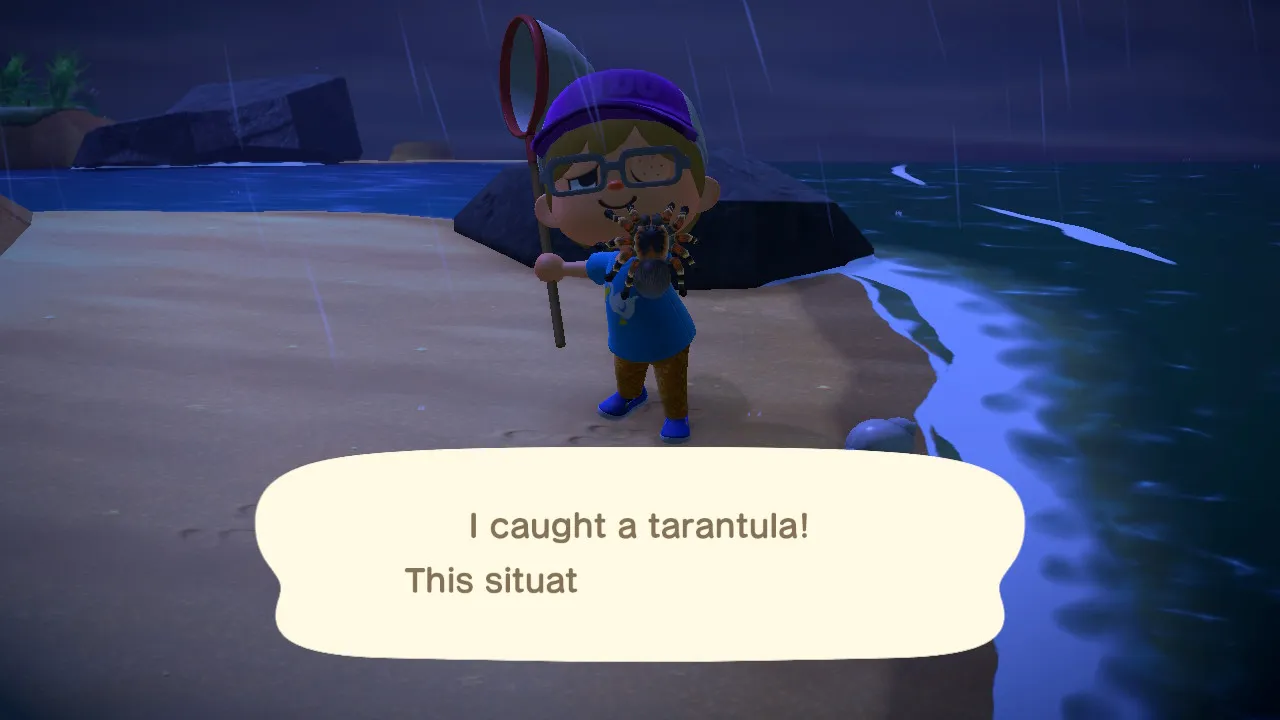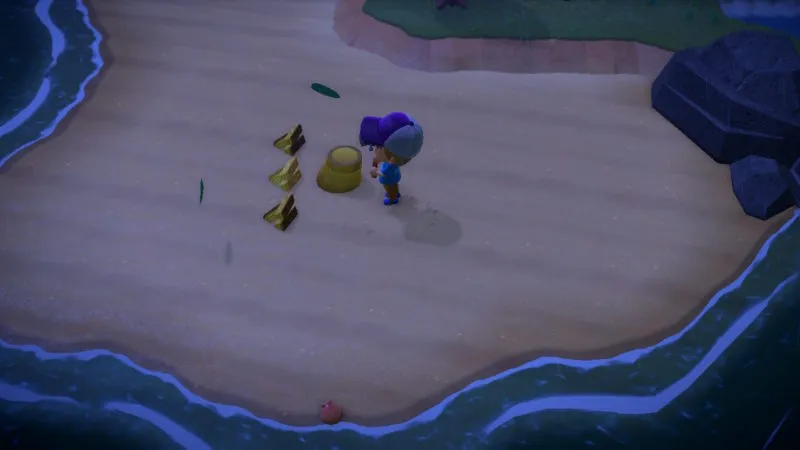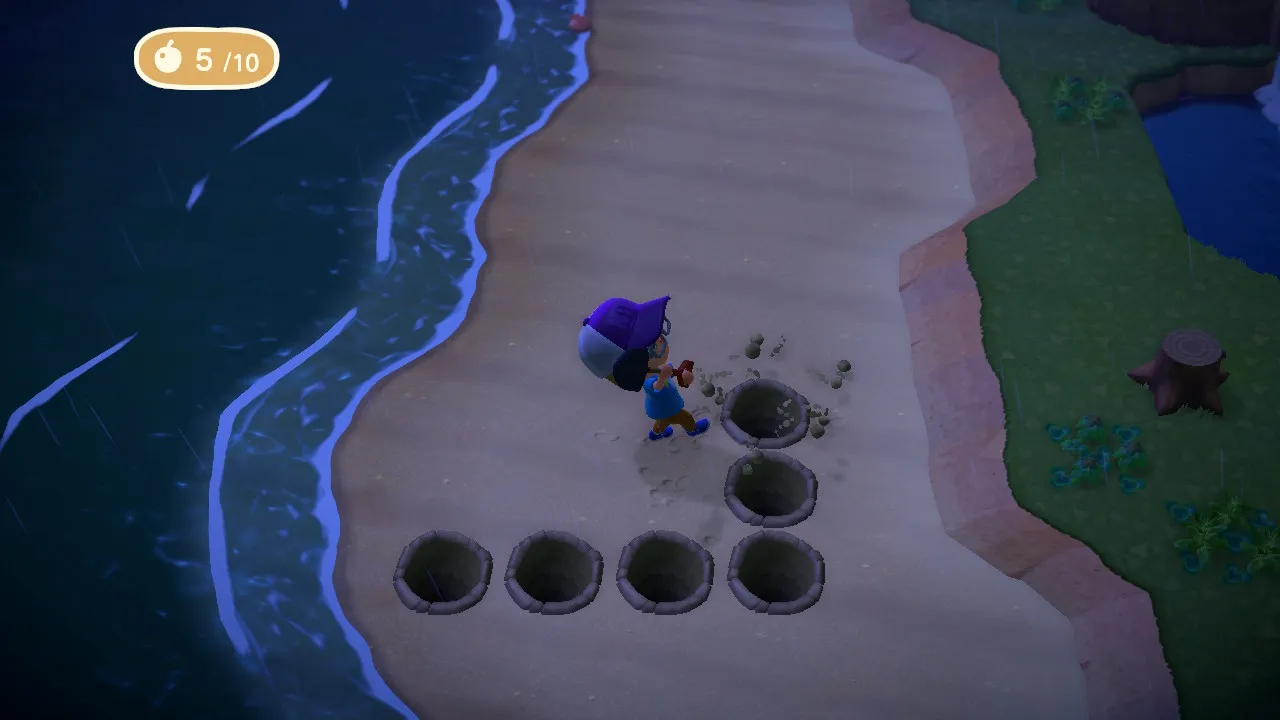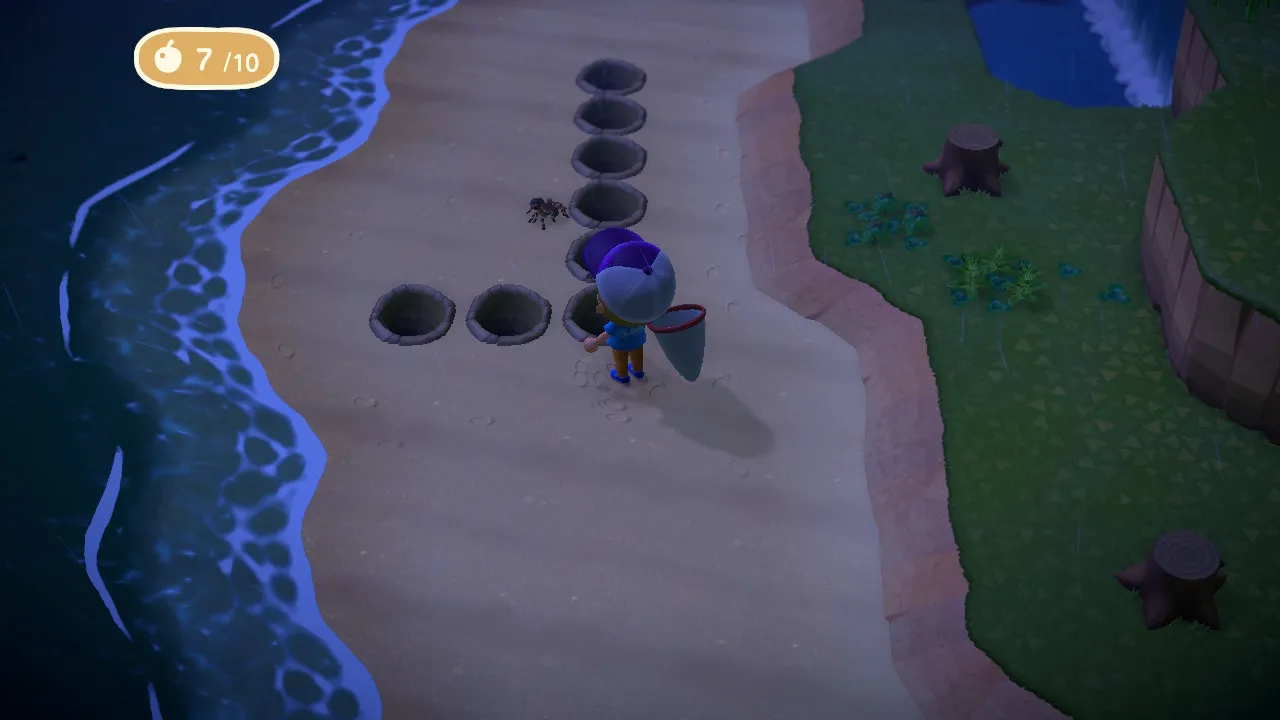What You Need To Know Before Tarantula Hunting
Embarking on a tarantula-catching journey in Animal Crossing New Horizons (ACNH) can be a thrilling, and sometimes nerve-wracking, experience. Before you even step foot onto your island with the intent to catch these eight-legged creatures, there are several crucial aspects you need to understand. First and foremost, tarantulas are only active during specific times of the day and year. They typically appear from 7 PM to 4 AM in the Northern Hemisphere during the months of November to April and in the Southern Hemisphere from May to October. Knowing this timeframe is essential to planning your hunting sessions effectively. Secondly, tarantulas can be found on your own island as well as on Mystery Islands, which are accessible via Nook Miles Tickets. Understanding their spawn mechanics and the environments they prefer will significantly increase your chances of success.
Tarantula Spawn Mechanics in Animal Crossing
Understanding how tarantulas spawn is key to maximizing your catching opportunities. On your home island, tarantulas have specific conditions that influence their appearance. They prefer open spaces, so clearing away flowers, trees, and other clutter can increase their spawn rate. The game also limits the number of active bugs on the island at any given time. This means that removing other insects, such as ants, tiger beetles, and wharf roaches, can help increase the likelihood of tarantulas spawning. Mystery Islands, accessed using Nook Miles Tickets, offer another hunting ground. Certain islands, like the ‘Tarantula Island’, are specifically designed for tarantula farming, making the process much more efficient. On these islands, all you need to do is clear the island of any trees or flowers, and often all other bugs, to ensure the maximum tarantula spawn. Be mindful of the island layout and the terrain to optimize your movement and catching strategies.
Where to Find Tarantulas on Your Island

Tarantulas can spawn in various locations on your island, but they generally prefer open areas where they can roam freely. This often means you’ll find them in grassy fields, near the beaches, or in any cleared space. When you’re exploring your island, keep an eye out for their distinctive movement. Tarantulas move quickly and erratically, making them easy to spot if you know what to look for. They are most active during the night, so nighttime exploration is your best bet. Regularly patrol your island, especially in the areas with minimal clutter, as these are prime spots for tarantula appearances. Additionally, consider landscaping your island to create optimal hunting grounds. Clearing pathways and open spaces can help you spot and approach them more easily. Remember to check all corners of your island, as they can sometimes hide in unexpected places.
How to Prepare for Tarantula Hunting
Before you head out on a tarantula hunting expedition, preparation is key. First, make sure you have enough free space in your inventory to accommodate the tarantulas you catch, as they are a valuable commodity. It’s advisable to have at least 10-15 free slots, but more is always better. Next, equip yourself with a sturdy net. Your net is your primary tool for catching tarantulas, and its durability matters. Consider purchasing a net with a high durability rating to avoid frequent repairs. You can craft nets or buy them from Nook’s Cranny. Furthermore, bring along some essential items, such as a ladder and vaulting pole, to navigate the terrain effectively, especially when exploring Mystery Islands. Ensure you are well-rested, as hunting at night can be tiring. Finally, always have a clear plan and be ready to adapt to the circumstances, since tarantulas can be unpredictable, and the environment can change.
Essential Tools for Catching Tarantulas
The right tools are essential for a successful tarantula hunt. The most important tool is your net, so invest in a reliable one. A flimsy net will break quickly, making the hunting process frustrating, so choose a net that can withstand multiple swings. Next, consider bringing a ladder and vaulting pole. These tools are especially useful when exploring Mystery Islands, as they allow you to access different parts of the island and navigate around obstacles, increasing your ability to avoid and catch tarantulas. Also, it is a good idea to have a shovel to dig up holes that prevent tarantulas from reaching you. Always have plenty of space in your inventory, as tarantulas take up a slot, and you don’t want to run out of space mid-hunt. Finally, a good strategy is to have a backup net ready in case your current one breaks. Having all these tools prepared will increase your chances of catching more tarantulas.
How to Catch a Tarantula Step-by-Step

Catching a tarantula requires a careful and patient approach. First, locate a tarantula. Once spotted, approach it slowly. Hold down the A button to equip your net, and keep it ready. As you get closer, the tarantula will stand up on its hind legs, showing its aggressive stance. At this point, stop moving entirely. Wait for the tarantula to calm down and go back to its normal stance. Once it does, take a step or two forward. Repeat this process: advance slowly, and stop when the tarantula is alerted. When you get close enough, carefully swing your net. If you time it right, you’ll catch the tarantula. If you miss, or if the tarantula attacks, you’ll be bitten and faint, waking up back at your house. Practice makes perfect, so don’t get discouraged if you don’t catch them the first time. The key is patience and precision.
Dealing With Tarantula Bites
Getting bitten by a tarantula is an unavoidable part of the hunting process. When a tarantula bites you, your character will faint, and you will wake up outside your house. You will lose all your progress on the island, so it’s essential to be careful. There are strategies you can implement to minimize bites. Approaching slowly, using the stop-and-go method, and understanding the tarantula’s behavior are crucial. If you do get bitten, don’t panic. Take a moment to evaluate your strategy. Make sure you have adequate space around you when approaching tarantulas to avoid getting cornered. Consider digging holes to create safe zones. Finally, if you’re on a Mystery Island and get bitten, you will respawn at the airport. This can be a setback, so it is always best to be prepared and cautious.
Maximizing Your Tarantula Hunting Efficiency
To maximize your tarantula hunting efficiency, consider several strategies. The first and most important is patience. Approaching tarantulas slowly and precisely, waiting for them to calm down, is key. Another tactic is to clear the island of clutter. Removing flowers, trees, and other items will create more open space for tarantulas to spawn. On Mystery Islands, you can take this even further by removing all non-essential items. Be aware of other bugs that can affect tarantula spawn rates. Catching other insects can help free up the spawn limit, allowing more tarantulas to appear. Moreover, consider the time of day. Tarantulas are most active during the night, so plan your hunts accordingly. Finally, plan out your approach before you start, taking note of the terrain and potential escape routes. With these methods, your hunting will be much more successful.
Tarantula Farming on Mystery Islands

Tarantula farming is a popular and effective way to earn bells in Animal Crossing New Horizons. To farm tarantulas efficiently, you’ll need to visit a Mystery Island. Look for an island layout that provides open space and few obstacles. Once on the island, clear everything to maximize the spawn rate of tarantulas. Cut down all the trees, dig up the stumps, and remove all flowers. Get rid of any other bugs that may spawn, such as tiger beetles or wharf roaches. This increases the chance of tarantulas appearing. By creating an environment that’s optimal for tarantula spawning, you can catch many tarantulas in one trip. This is a great way to earn bells and fill your museum. It is also an effective way to get resources like iron nuggets and wood. Note that the effectiveness of tarantula farming can sometimes be affected by updates, so always stay informed on the latest strategies.
Turning Your Hunt into Profit
Tarantulas are not only a fun catch, but they are also valuable for making bells. Each tarantula can be sold at Nook’s Cranny for 8,000 bells, making them one of the most profitable bugs to catch in the game. As you fill up your inventory, consider when to sell your haul. Selling directly to Timmy and Tommy at Nook’s Cranny is always a good option. Alternatively, if you have a friend with a higher turnip price, you can travel to their island and sell them there for maximum profit. Be sure to sell your tarantulas before the shop closes for the day. Apart from selling, tarantulas can also be donated to Blathers at the museum. Donating the first tarantula is essential to complete your museum’s insect exhibit. However, once you’ve donated one, you can sell all subsequent catches for profit. With the right approach, you can turn your tarantula hunting hobby into a lucrative source of income.
Other Bugs to Watch Out For
While hunting for tarantulas, you’ll likely encounter other insects. The presence of these other bugs can affect the spawn rates of tarantulas, especially on your island. Therefore, it is important to be aware of the common insects. On Mystery Islands, particularly those with less open space, you might find water bugs like diving beetles or pond skaters. These insects take up spawn slots, reducing the likelihood of tarantulas. On your own island, keep an eye out for other insects like tiger beetles, wharf roaches, and ants. Clearing away these insects will increase the chances of tarantulas spawning. Staying vigilant and actively managing other insects on your island can significantly improve your success in tarantula hunting. Remember to regularly patrol and clear the areas where tarantulas typically spawn.
